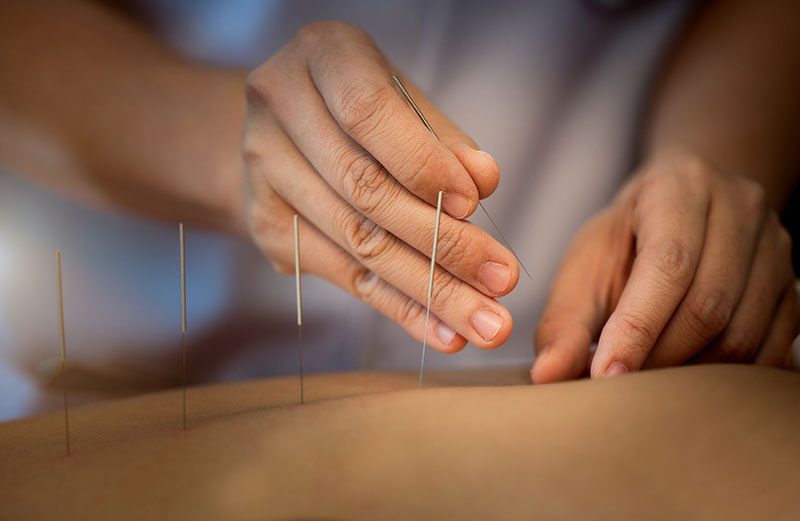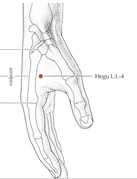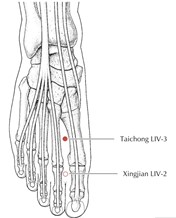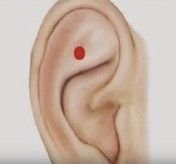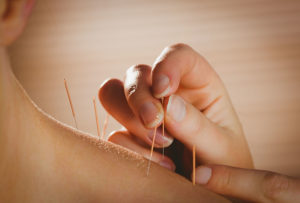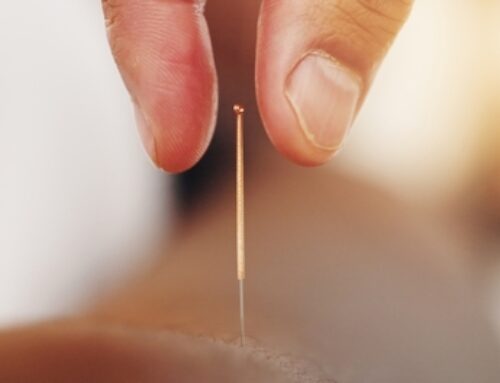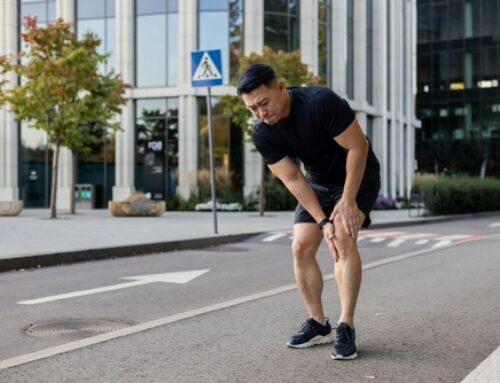Acupuncture is gaining popularity among all types of amateur and professional athletes. Acupuncture has been shown to reduce pain and inflammation, improve blood circulation, reduce anxiety, and relieve tight muscles. But, it may be most effective for athletes attempting to recover from repetitive strain injuries. Repetitive strain injury, commonly known as RSI, is a musculoskeletal disorder which results from repetitive activity, usually at work or with physical training. RSI can affect any muscle, tendon, joint, or bursa that becomes overworked and has a difficult time recovering from use.
Treat Repetitive Strain Injury with Acupuncture
There are a number of ways to treat these types of injuries. Acupuncture performs much better than many of these different approaches. Acupuncture uses fine needles to restore blood flow, to relieve symptoms such as pain and to return the nervous system to its optimal functioning capacity. From a scientific perspective, acupuncture is known to work in a number of different ways:
Blocks pain signals to the central nervous system
Triggers the release of endorphins, your body’s natural painkillers
Relaxes the muscle spindles in trigger points
Reduces inflammation
Improves circulation to aid faster healing
Acupuncture may be applied to the local area, where you are experiencing the pain or in areas far removed from the site of pain. Often acupuncture needles are placed in the known points that produce the greatest pain blocking effects. Points like LI-4 in the hand, LV-3 in the foot, and Shen Men in the ear can be far from the site of pain, but have a profound effect on the problem.
Scientific research is backing up acupuncture’s claims as an effective healing tool for athletes suffering from repetitive strain injuries.
- Acupuncture reduces pain
This is the most common reason most people seek acupuncture treatments. Acupuncture reduces pain by releasing endorphins and releasing natural painkillers. It does so without the use of drugs by stimulating the nervous system.
“Electroacupuncture mechanisms on inflammatory pain have been extensively studied. The modality inhibits both the sensory and the affective components of inflammatory pain, acting through peripheral, spinal, and supraspinal mechanisms with the involvement of a battery of bioactive molecules including opioids, N/OFQ, serotonin, norepinephrine, glutamate receptors and transporters, cytokines, and signal molecules. Of these, opioids play a central role in electroacupuncture inhibition of all kinds of pain.
— Zhang, R., Lao, L., Ren, K., & Berman, B. M. (2014). Mechanisms of acupunctureelectroacupuncture on persistent pain. Anesthesiology, 120(2), 482–503. https://www.ncbi.nlm.nih.gov/pmc/articles/PMC3947586/
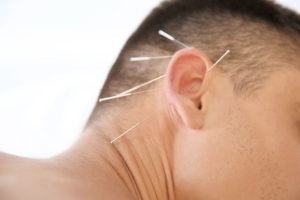 “Ear acupuncture may be a promising modality to be used for pain reduction within 48 hours, with a low side effect profile.
“Ear acupuncture may be a promising modality to be used for pain reduction within 48 hours, with a low side effect profile.
— Murakami et al. Ear Acupuncture for Immediate Pain Relief – A Systematic Review and Meta-Analysis of Randomized Controlled Trials (2017) https://www.ncbi.nlm.nih.gov/pubmed/28395101
- Acupuncture helps you to recover faster
Besides reducing pain, acupuncture has been shown to reduce inflammation, promote blood circulation, improve energy levels and sleep, and reduce muscle soreness and fatigue. Proper recovery allows for more intense levels of training which translates into better performance when it counts. Having good energy levels and a good night’s rest is one of the keys to being at your best on game day. Acupuncture has been shown to improve sleep quality and reduce fatigue which allows muscles to recover better after exercise.
“Electro-Acupuncture (EA) can decrease serum malondialdehyde (MDA) content and increase superoxide dismutase (SOD) activity and SOD/MDA in athletes experiencing intensive endurance exercise, which may contribute to its effect in relieving athletic fatigue.
— Liu JY, Liu LM. [Influence of electroacupuncture intervention on free radical metabolism in athletes undergoing intensive endurance exercise]. Zhen Ci Yan Jiu. Feb 2013 https://www.ncbi.nlm.nih.gov/pubmed/23650800
“The results showed that the acupuncture group (PC6 and ST36) has significantly lower HR(max), VO(2max) and blood lactic acid than both the sham and normal groups at the 30th min post-exercise. Blood lactic acid of the acupuncture group was also significantly lower than that of the other two groups in the 60th min post-exercise. Our findings have shed some light on the development of effective acupuncture schemes to enhance the recovery ability for elite basketball athletes.
— Lin Z.P. et al. Effects of acupuncture stimulation on recovery ability of male elite basketball athletes. Am J Chin Med. 2009. https://www.ncbi.nlm.nih.gov/pubmed/19606508
- Acupuncture prevents injury
Trigger points are hyperirritable, tight bands of muscle that cause pain in predictable referral patterns. They are usually the result of overuse, poor posture, or structural issues and can lead to more serious injuries because the affected muscles are in pain and cannot sustain their normal workload. Releasing trigger points has been shown to be effective in reducing pain and increasing range of motion in the affected muscles. Also, as mentioned above, acupuncture reduces pain and promotes better recovery which also reduces the chance for injury.
“Current data suggest that active MTrPs (myofascial trigger points) are associated with a high symptom burden and a negative impact on function, both physical and psychosocial. Investigators also demonstrated that dry needling provides symptom relief and change in the status of the trigger point, although the mechanism by which this works has not yet been demonstrated.
— Shah et al. Myofascial Trigger Points Then and Now: A Historical and Scientific Perspective (2015) https://www.ncbi.nlm.nih.gov/pmc/articles/PMC4508225/
“Our results suggest that the response to trigger points is greater than the response to treating traditional acupoints or non-trigger points. These results suggest that the site of stimulation is important, and the acupuncture stimulation of myofascial trigger points might be most effective for chronic shoulder pain patients.
— Itoh et al. Randomized Trial of Trigger Point Acupuncture Treatment for Chronic Shoulder Pain: A Preliminary Study (2014) https://www.sciencedirect.com/science/article/pii/S2005290113000526
“Acupuncture also appeared to significantly reduce fatigue severity measured by Chalder’s Fatigue Scale and the Fatigue Severity Scale compared with other types of control.
— Zhang et al. Acupuncture for chronic fatigue syndrome: a systematic review and meta-analysis. (2019) https://www.ncbi.nlm.nih.gov/pubmed/31204859
- Acupuncture improves range of motion and flexibility
Acupuncture releases tight muscles which allows them to lengthen and shorten through their entire range of motion. This results in reduced pain and increased flexibility.
“The underlying process with the treatment of trigger points is to temporarily release the trigger points to reduce pain and increase muscle mobility. This is often accomplished by massage, heat (direct or through ultra- sound), and needling and injection for persistent trigger points. This is followed by stretching and simulation which essentially exercises the muscle. We hypothesize that the exercise of the muscle most likely starts to remodel the cytoskeleton, including the microtubular network, toward a more normal phenotype. There is also improvement in metabolism possibly by the increased blood flow and increase in mitochondrial content.
— Jafri, M., Mechanisms of Myofascial Pain (2014) https://www.ncbi.nlm.nih.gov/pmc/articles/PMC4285362/
“Compared with the exercise group, the exercise plus acupuncture group experienced significantly greater improvement with treatment [in functional mobility, power, and pain levels].
— Sun et al. Acupuncture for frozen shoulder (2001) https://www.ncbi.nlm.nih.gov/pubmed/11773673
Acupuncture has been shown to increase performance in a variety of sporting events. It can be used both as a recovery tool post-exercise, and also before exercise to relax the body, increase power and increase muscle endurance.
“Improvement in performance compared with a corresponding number of control tests, without TNS (transcutaneous nerve stimulation) or with placebo stimulation in the same subjects, was almost regularly observed in running, swimming and ergometer cycling, although with great individual variations. The average improvement was 4.3 sec (2.2%) in 1.000 m road racing (n = 9); 2.3 sec (1.8%) in 800 m track racing (n = 5); 0.9 sec (1.4%) in 100 m swimming (n = 12); 1.3 sec (0.8%) in 200 m swimming (n = 6); and 2.5 sec (0.9%) in 400 m swimming (n = 3). In a bicycle ergometer test with stepwise, progressive exercise to muscular fatigue, the maximal capacity was increased by 9% (n = 4).
— Kaada, B. Improvement of physical performance by transcutaneous nerve stimulation in athletes. Acupunct Electrother Res. 1984;9(3):165-80. https://www.ncbi.nlm.nih.gov/pubmed/6151789
- Acupuncture helps to improve concentration and reduce performance anxiety
Focus and concentration are paramount when trying to compete and perform at the highest levels. Acupuncture has been shown to reduce anxiety and improve cognitive function which means that you will be able to focus when the game is on the line.
“In conclusion, the results suggested that acupuncture has the capacity to decrease cognitive anxiety and somatic anxiety prior to competition in adolescent athletes, while this was accompanied by significant physiological changes.
— Shayestehfar, M et al. Acupuncture Anxiolytic Effects on Physiological and Psychological Assessments for a Clinical Trial. Scientifica (Cairo). 2016; 2016: 4016952. https://www.ncbi.nlm.nih.gov/pmc/articles/PMC4834398/
“Overall, there is good scientific evidence encouraging acupuncture therapy to treat anxiety disorders as it yields effective outcomes, with fewer side effects than conventional treatment.
— Amorim et al. Acupuncture and electroacupuncture for anxiety disorders: A systematic review of the clinical research (2018) https://www.ncbi.nlm.nih.gov/pubmed/29705474
If you are looking for that athletic edge or are just looking to feel healthier, give acupuncture a try. We will be happy to let you know the benefits that you may see in just a couple of acupuncture sessions. Our office is dedicated to help you reach your goals and to see you and your family become healthier than you have ever been.

Daryl C. Rich, D.C., C.S.C.S.

